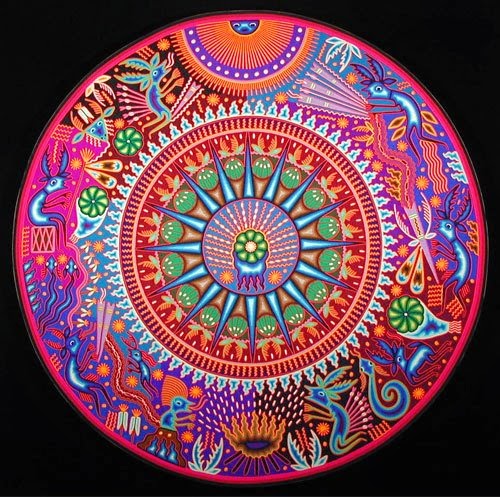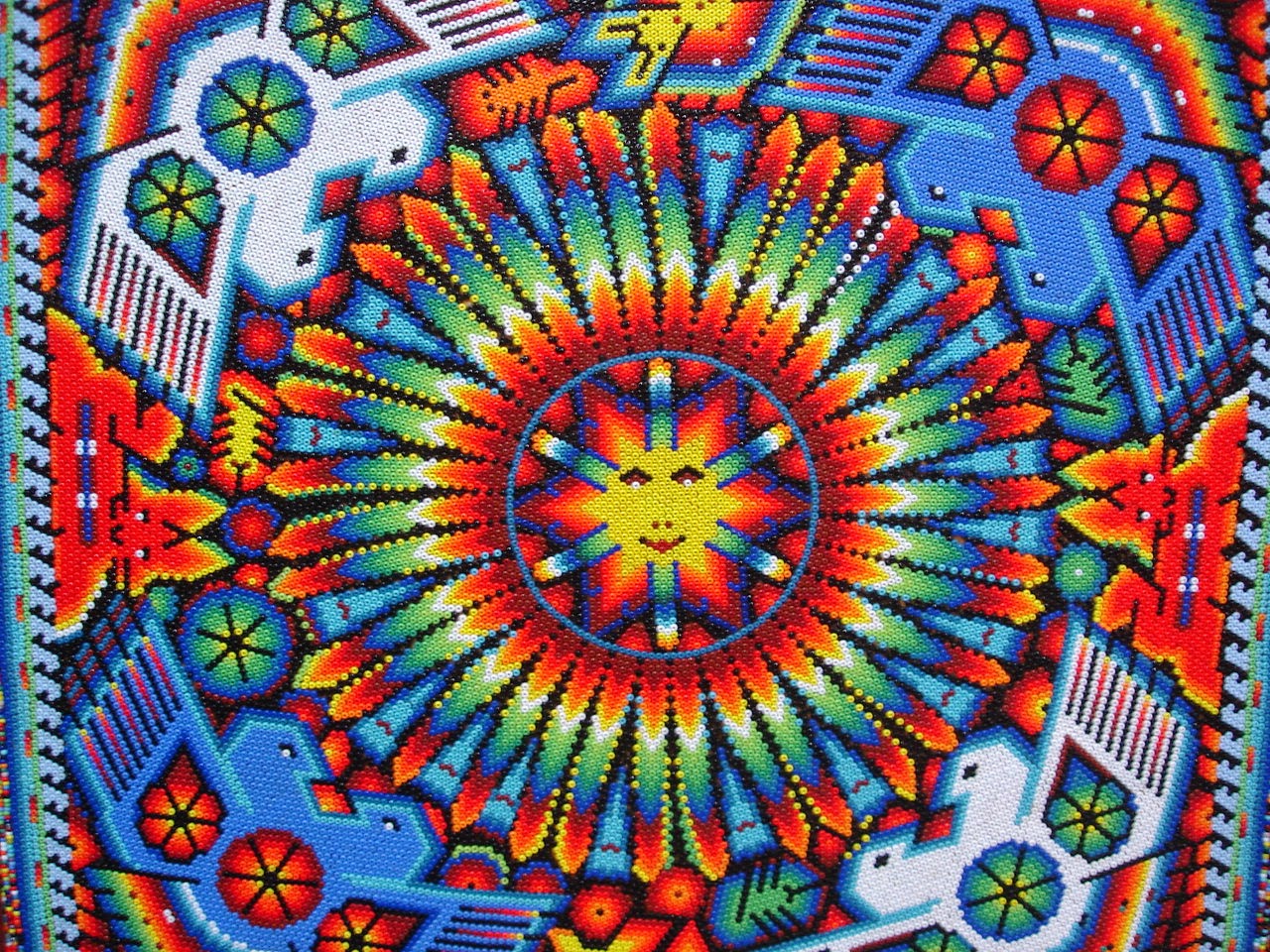Huichol Art dates back millenia. During spiritual rituals Shaman have visions which are then transcribed into beaded carvings and yarn art.
Huichol art is personal and captivating, with intricate designs, vibrant colors and sacred symbols. It is an expression of deeply held spiritual beliefs.
In the Huichol culture, art and religion are inextricable. The shaman links the community with the spirit world, from where their creativity pours forth as a gift from their deified ancestors - to be given back as offerings to the gods.
Ceremonies
Each year, the Huichol embark on pilgrimages to the sacred land of Wirikuta to hunt the "Blue Deer" (peyote, a desert cactus with hallucinogenic properties).
The pilgrims - individuals and families, young and old - bring offerings in return for the gift of making art and entering the priesthood. The ceremonial offerings - pictures, masks and candles - are considered material forms of prayer.
The Huichol believe their deified ancient ancestors, the First People, once dwelled in the Wirikuta desert and were driven out into the Sierra Madre Occidental to live a mortal agrarian existence. The pilgrims, led by a mara'akame(shaman) to cleanse the way, travel 600 miles round trip to re-enter the sacred land.
During the trip, they perform a series of rituals and ceremonies to transform themselves into deities. At different locations, they adopt more and more of their divine identities and assume the feelings and attitudes attributed to the First People.
If the ceremonial thoughts and actions are properly performed, the peyote will be found and "slain" with a bow and arrow. A slice of peyote will be given to each of the peyoteros who will then have their own personal visions. They will talk to God, receive instructions and will, thereafter, sing, cure, or create.
This moment of sharing the peyote is the fulfillment of the highest goals in Huichol religious life. They have traveled to paradise, transformed themselves into deities and communed with the gods, and then return as mortals.
From the ecstasy of that experience the artwork of the people is born.
Divine Art
For the Huichol people, art is a means of encoding and channeling sacred knowledge. It is considered a form of prayer, providing direct communion with the sacred realm.
The Huichol use beads, yarn and wood in their imaginative work, creating elegant beaded jewelry, spiritual masks, votive bowls known as rukuri and animal figures. Every item carries heavily symbolic, esoteric and beautifully rendered symbols.
There are several prominent symbols featured in Huichol art.
Jicuri, the peyote plant, is considered the plant of life, promoting harmonious relations with the gods. It is often represented as the original ear of corn because both carry the colors of white, yellowish green, red and blue. Other times, jicuri is represented as antlers, which is a symbol of the first jicuri.
The serpent is also highly revered for its protection of corn and peyote by eating rodents and pests harmful to harvest. Four female deities are represented by the serpent, and the Mother Goddess of the Sea is pictured as a huge, coiled serpent forming herself into a cyclical storm cloud from which rain falls. The Huichol believe that rain itself consists of millions of small snakes.
Takutzi Nakahue, mother of all gods and of corn, is symbolized by the sacred tree, the armadillo, the bear, the water serpent and rain. Tamat’s Kauyumari, the older brother who shaped the world, often appears as deer, coyote, the pine tree or a whirlwind.























1 comment:
Thank you for sharing this. These pieces are so vibrant and beautiful. I appreciate reading about how and why the artists make what they do. As an artist myself, this resonated as I've often described my work as visually documenting my spiritual journey. Do these hunts still continue and are they open to inviting outsiders or occasional lone wolves to the process? Thanks, Kelly
Post a Comment